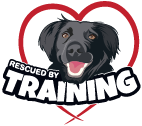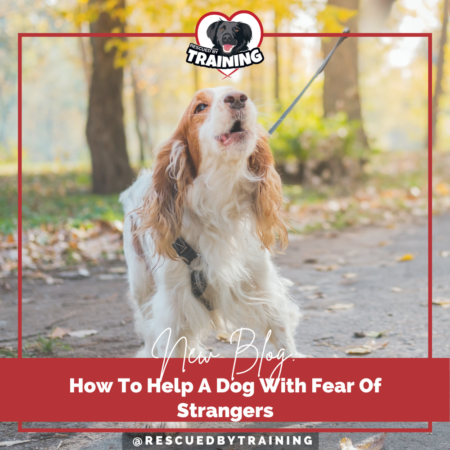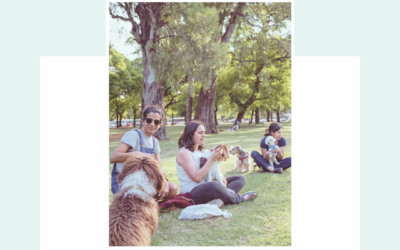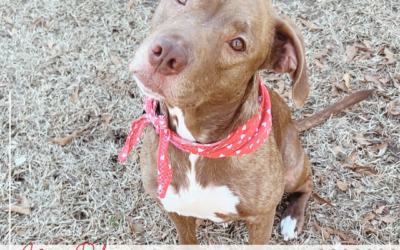As someone who focuses on fear and aggression, a majority of my clients have fear of strangers, or “stranger danger.” This includes subsets of strangers, like fear of children, fear of men or fear of people who look or act a certain way. When your dog is afraid of people it can make living your life, including walks, very challenging. It can be embarrassing, disruptive and in some cases, dangerous.
There are things we can do in the course of training to help your dog feel more comfortable and help you be more confident in living with your dog and giving you some relief with things you may not be able to avoid, like potty walks but these things are never a substitute for one-on-one training.
How To Help A Dog With Stranger Danger:
- Learn their body language and signs of stress, before if gets obvious like lunging, growling or biting. Learning your dog’s body language and identifying their signs of anxiety and fear is key to being able to intervene early to give them relief. You can download my free dog communication handout here and register for my free dog body language course. Of course, neither of these are a replacement for one-on-one training.
- Manage Your Dog’s Environment. Avoid having people over and don’t bring your dog to places where there will be lots of people and expect him to figure out how to “get used to it.” If you absolutely can’t prevent people from coming over then put your dog away. It’s OK – I give you permission. It’s actually better to put your dog away than force them to be exposed to strangers at an uncomfortable intensity. They won’t just learn to “deal with it” – they’ll learn that strangers are indeed as scary as they thought they were. Flooding your dog with the thing that scares them won’t help.
- Keep walks short or avoid them. If potty walks are essential because you have no yard then keep them short and try walking at off-peak hours. Or, transport your dog to less busy areas for walking. Walks are not the end all, be all, so if your dog is not enjoying their walk, skip it. If your dog just can’t go outside without being triggered, then it might be time to look at an indoor potty area until some training progress can be made. If you dog is afraid of going outside, I have a course for that.
- Give Your Dog Choices. Never force your dog into a situation. We need to make sure the dog always has the right to “vote with their feet” and decide enough is enough or that they want to move away. This means not asking them to sit/stay or do some other required behavior to earn the reward. Remember too, fear is not disobedience. Your dog isn’t disobeying your request to sit or stop barking because he’s disobedient. He’s afraid and has bigger things to worry about than your request for him to sit.
- Avoid aversives, like leash jerking, prong or shock collars or yelling. While it can be embarrassing if your dog is reacting to strangers, and I understand you want their barking, lunging or unwanted behavior to stop, I promise you that yelling, yanking on their leash or using a prong or shock collar will only make their behavior worse, not better. If your dog is having big feelings, they’re telling you there is a problem and we should never punish a dog for communicating. Not only does this not fix the underlying problem, it can cause long-term unwanted side-effects. Behavior suppression is not behavior modification.
- Understand how dogs learn. Helping dogs with issues like stranger danger requires changing their underlying emotions, not just doing a basic obedience skill. And don’t fall for the myth that certain breeds need different types of training. All dogs learn the same way.
- Don’t wing it! Use a structured, incremental training plan to measure your dog’s successes and failures and learn how and when to make it more difficult. One of the biggest mistakes people make when doing DIY training is not using a real training plan and making things too difficult too fast. You want to avoid big jumps in learning. It’s like if you were learning an instrument and went from Hot Cross Buns to Beethoven’s 5th with no in between steps. This requires an incremental plan that factors in all the elements of your dog’s behavioral issues as well as their environment, triggers, intensity and more.
- Work with a qualified professional, like me! Not all trainers are created equally and in an industry where professional licensure is not required to call yourself a dog trainer and there are no any industry-specific government regulations, choosing a qualified trainer can be tricky. While you may think professional training is expensive, unqualified training is inefficient, ineffective, inconsistent and frustrating and will likely cost you more work, more money, more time, more anxiety and more heartache in the long run.
I can help you and your dog to live a better life! Book a session today!
And, be sure to sign up for my free weekly newsletter so you don’t miss out on free tips, videos, personal stories, client successes and more!
Happy training!
![]()




